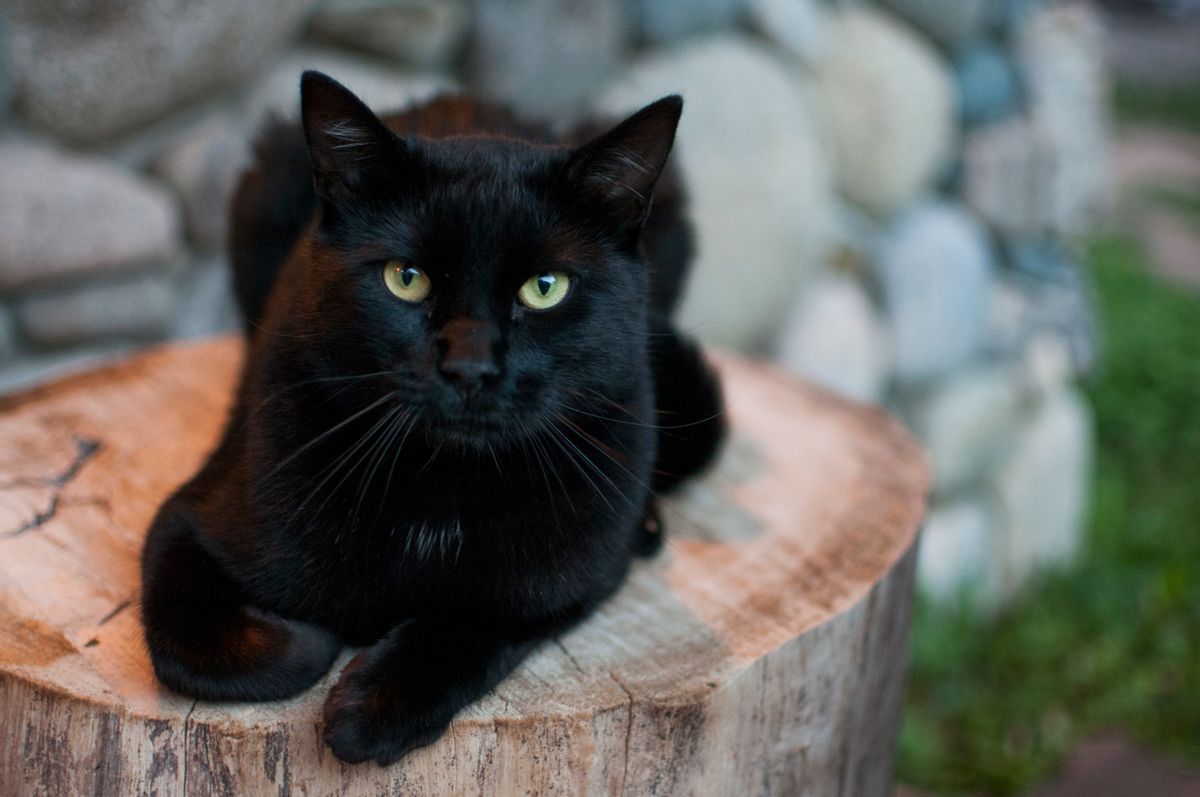According to European folklore, if a black cat crosses your path, you've run out of luck. The association between strolling felines and terrible misfortune likely comes from the tradition of the "witches' familiar," a small animal assistant, often a black cat.
But according to some social media posts, the connections between black cats and paganism run a bit deeper. These posts claim that during the Middle Ages, cats were considered Satanic and evil because of a 1233 papal decree, so Europeans rounded up cats across the continent and dispatched them in mass killings. But the cats had their revenge from beyond the grave — their pest control prowess would have led to fewer rats had their population not decreased, and in the next century or two, more cats and fewer rats could have saved people from the Black Death, the most devastating outbreak of plague in recorded history.
But as tidy as this story seems, it dates to the late-1990s rather than the mid-1200s.
'Vox in Rama'
"Vox in Rama" is a real document written as a letter in the year 1233 by Pope Gregory IX. Because of the historical importance of the pope, their documents are extensively classified, and under that classification system, "Vox in Rama" is considered a papal decretal — that is, a letter written by a pope whose purpose was to clarify questions about administration and punishment. Some sources (but not all, strangely) refer to this document as a papal bull — a decree that carries an official seal and begins with the pope’s name and the phrase “episcopus servus servorum Dei" (Bishop, servant of the servants of God). In some copied versions of the decretal, this phrase is present, while in others, it is not.
"Vox in Rama" was sent to Konrad of Marburg, a German priest and nobleman, along with the Archbishop of Mainz and the Bishop of Hildesheim. It did indeed target heretics in that area of Germany, who, according to the decretal, had formed cults worshipping the devil. The decretal describes in detail the exact ritual of the cults in question, and it does mention the use of cats in the rituals.
“Afterwards they sit down to a meal and when they have arisen from it, from a certain statue, which is usual in a sect of this kind, a black cat about the size of an average dog, descends backwards, with its tail erect. First the novice, then the master, then each one of the order who are worthy and perfect, kiss the cat on its hindquarters”
“Ad convivium postmodum discumbentibus et surgentibus completo ipso convivio, per quandam statuam, que in scholis huiusmodi esse solet, descendit retrorsum ad modum canis mediocris gattus niger retorta cauda, quem a posterioribus primo novitius, post magister, deinde singuli per ordinem osculantur, qui tamen digni sunt et perfecti.”
There is no evidence beyond "Vox in Rama" itself to suggest that these rituals actually took place.
Did 'Vox in Rama' Lead to Europeans Thinking Cats Were Evil?
Not really. While "Vox in Rama" did have papal authority, it wasn’t widely shared. A copy may or may have been sent to Frederick II, the Holy Roman Emperor, but there is no evidence of that. So all three of the confirmed recipients of the letters were religious leaders in Germany. Even if they did preach about the evils of cats, that would be their fault for misinterpreting the decretal, which again, does not demonize cats or compare them to Satan and instead just describes how black cats were supposedly used in that particular ritual.
There is evidence that Europeans killed cats during the Middle Ages, but none of that evidence suggests that mass killings of cats happened. One archaeological analysis titled “Killing Cats in the Medieval Period. An unusual episode in the history of Cambridge, England” examined the remains of 79 medieval cats and determined that they were skinned for their fur. Snopes would like to emphasize the author’s use of the word "unusual" in the title.
Cats Can Get Plague, Too
This particular claim says that the mass killing of cats increased the rodent population, which made the bubonic plague that struck in the mid-1300s even worse. Bubonic plague is caused by a bacteria named Yersinia Pestis, which infects fleas. These fleas do live on rats, which are carriers of the plague, meaning they’re not affected by it but can spread it. But the cats that would act as pest control aren’t immune either. According to the Centers for Disease Control, cats are actually highly susceptible to plague.
Another trap can emerge here, however — you might assume that people could have started killing the cats because they brought the plague. Luckily for the cat lovers out there, there’s no evidence for that either. The only notable, documented example of mass cat killing that has any semblance of truth to it is from Paris in the 1700s. In the book “The Great Cat Massacre and Other Episodes in French Cultural History,” American historian Robert Darnton dedicates a chapter to explaining the titular event. It had nothing to do with the bubonic plague.
Where Did This Idea Come from?
According to historian Mike Dash, like many common myths found on the internet, it originated in the late 90s or early 2000s.
"The problem here is simply that the story about the cats is almost certainly a modern internet-based fabrication," he told Snopes via email.
Snopes found a reference to the myth in Donald Engels' book "Classical Cats: The Rise and Fall of the Sacred Cat," published in 1999. Dash, an active poster on the AskHistorians subreddit, said in a post there that he found a book reference to the idea in "The Cathars" by Malcolm Lambert, published in 1998. The claims likely originated from these books, then spread to blogs on the internet, then beyond.
